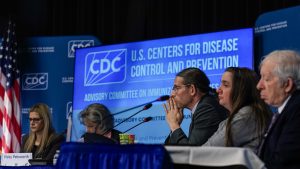When opioid control is strengthened, domestic violence decreases: Study
Ella Greene April 20, 2025 0
- A new study from the University of South Florida found that more robust opioid regulations and control laws could result in fewer domestic violence cases. The findings suggest that aside from reducing the number of opioid deaths and rates of addiction, stronger control laws could have a greater impact on society at large.
- The control law at the heart of the study is the Mandatory Access Prescription Drug Monitoring Program, which was first instituted in the 2010s and requires health care providers to consult a centralized database before prescribing opiates.
- Thanks to these programs, the researchers saw a 10% reduction in the number of “simple assaults,” which made up nearly 75% of domestic violence cases in their data set.
Full Story
More robust opioid regulations and control laws could result in 10% fewer domestic violence cases, a new study from the University of South Florida concluded. The findings indicate that, aside from reducing the number of opioid deaths and rates of addiction, stronger control could have more wide-ranging knock-on effects.
USF doctoral student Minglu Sun and associate professor of economics Andrei Barbos published their study in Health Economics. Using data from the National Incident-Based Reporting System, the team compiled reports from 31 states between 2007 and 2019. They then created controlled models while accounting for numerous variables, including demographics, socioeconomic status, employment status, health status and insurance coverage, as well as “overlapping regulations,” such as legalized marijuana.
Mandatory Access Prescription Drug Monitoring Programs
Through this lens, Sun and Barbos were able to compare instances of domestic violence against states that have implemented Mandatory Access Prescription Drug Monitoring Programs, a centralized database that health care providers are required to reference so they can avoid overprescribing opioids. While the use of Mandatory Access Prescription Drug Monitoring Programs began in the 2010s, states have varied in their adoption of it –– something the researchers were able to capitalize on.
“The staggered rollout of these programs across the country offered a unique opportunity to analyze their effects over time and across different regions, which allowed us to isolate the effects of these opioid control programs on the prevalence of domestic violence from other factors, such as economic cycles, concurrent policy changes or broader crime trends,” Barbos said.
Thanks to these programs, the researchers saw a 10% reduction in the number of “simple assaults,” or instances when a person tries to physically harm another without a weapon or serious injury. In their data set, simple assaults made up nearly 75% of domestic violence cases.
“Earlier public health literature documented a correlation between opioid consumption and domestic violence, but correlation does not imply a causal relationship,” Barbos said. “This article establishes a causal relationship and provides policymakers with evidence of an additional positive spillover of opioid control policies, which may also be relevant for the policy design surrounding the current fentanyl crisis.”
Related Stories
Ella Rae Greene, Editor In Chief
Ella Greene
Ella and the staff at Clear Media Project (CMP) curate these articles.
Unless otherwise noted CMP does not write these articles.
The views, thoughts, and opinions expressed in the articles published on this blog belong solely to the original authors and do not necessarily reflect the views of the blog owner. The blog owner does not claim ownership of the content shared by contributors and is not responsible for any inaccuracies, errors, or omissions.
All rights and credits goes to its rightful owners. No Copyright Infringement is intended. If you believe any content infringes on your rights, please contact us for review and potential removal.





